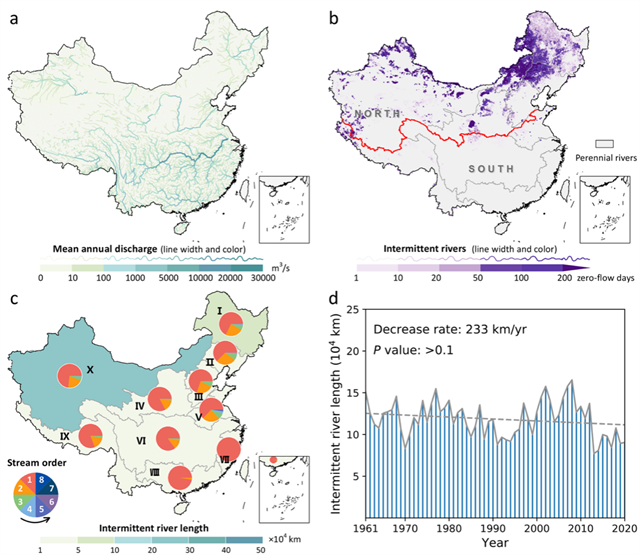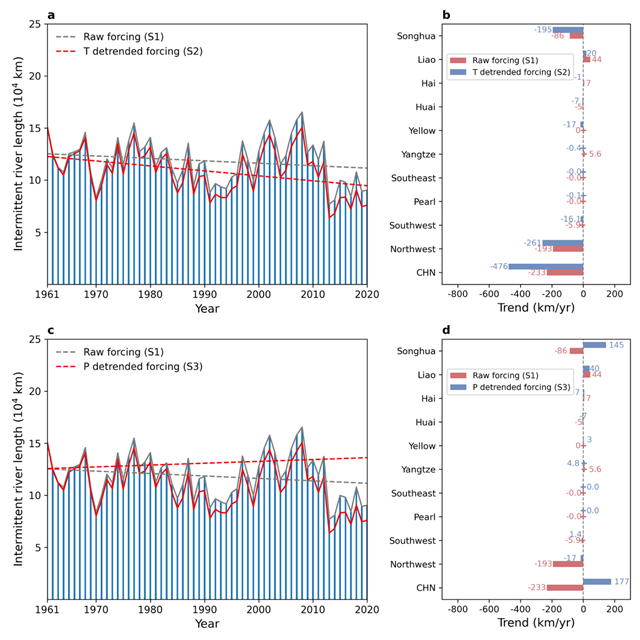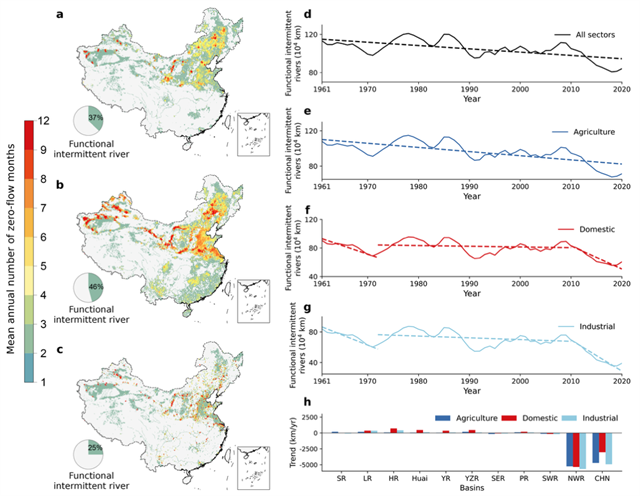Dr. Gou Jiaojiao from the Faculty of Arts and Science Published an Article in PNAS
Dr. Gou Jiaojiao from the Faculty of Arts and Science published an article titled “Warming climate and water withdrawals threaten river flow connectivity in China” in PNAS. River flow connectivity is vital for sustaining freshwater ecosystems, which are essential to life on Earth. The findings highlight the urgent need to maintain sustainable water resources in a warming climate in which unregulated water abstractions increasingly threaten river flow connectivity, particularly in drying regions.




The abstract of the paper is as follows:
River flow connectivity, the continuity of fluvial discharge in space and time, provides a crucial lifeline for most biotic communities on Earth. Yet there is still limited understanding of the impacts of climate change and human water withdrawal on river connectivity. Here, we assess the river flow connectivity of 217,001 river reaches in mainland China from 1961 to 2020 and the impact of different climate warming trends and water withdrawals for different sectors. We estimate that naturally intermittent rivers represent about 13% of all river reaches, with a large contrast between northern and southern China (12% vs. 1%, respectively). Although river intermittency decreased slightly during this period (i.e., river connectivity lengthened due to increasing precipitation), warming temperatures offset this decrease by reducing surface water persistence, causing the decrease (−476 vs. −233 km/y) to double when removing the long-term temperature trend. Critically, the length of intermittent rivers increased remarkably from 13 to 50% when considering human water withdrawal by agricultural, domestic, and industrial sectors, in addition to environmental flow requirements. Our findings highlight the urgent need to maintain sustainable water resources in a warming climate in which unregulated water abstractions increasingly threaten river flow connectivity, particularly in drying regions.


